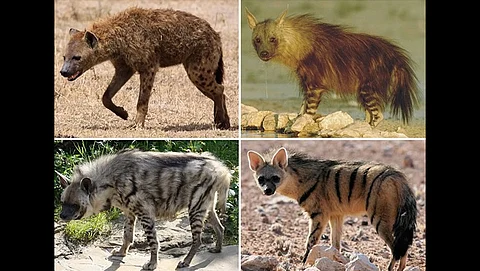

The four extant species of hyena or hyaenids found on the African continent are facing increasing threats, leading to population declines, according to conservation organisation, Wild Africa.
The threats are varied. They include persecution fueled by fear, superstition, and misinformation about the species; loss of habitat due to agricultural expansion and human settlement; human-wildlife conflict with farmers and local communities, particularly when livestock is threatened; hunting for bushmeat and for use in traditional medicines and accidental deaths from poisoning, snaring, and vehicle collisions.
The hyena is often mischaracterised as the ‘villain of the African Savanna’, given its haunting howls and unconventional appearance.
There are four distinct species of hyena. These include the striped hyena (Hyaena hyaena) which is also found in the Middle East and Asia as well as the brown hyena (Parahyaena brunnea), the aardwolf (Proteles cristatus) and the spotted hyena (Crocutta crocutta).
Each of these hyaenids is unique, according to a statement by Wild Africa.
The spotted hyena is the most widespread and well-studied of the four species, found throughout sub-Saharan Africa. Although wrongly considered a mere scavenger, the ‘laughing hyena’ is among the continent’s most skilled predators.
These animals live in complex groups led by females (larger and stronger than males) called ‘clans’. Spotted hyena clans can hunt up to 90 per cent of their food using strategy, teamwork and endurance.
They are also intelligent and very vocal, capable of making a making a vast variety of sounds to communicate group movements, assert rank, and strengthen social bonds.
The striped hyenas, found in North and East Africa, are primarily nocturnal and solitary. They are omnivores and feed on small animals, fruits and vegetables.
“They are also the biggest carcass-scavengers of the family. Interestingly, research suggests they use “natural lavatories” to communicate via scent—sharing information about their territory, reproductive status, and group presence,” the statement noted.
The brown hyena is found mainly in southern Africa’s arid deserts and savannas. It is predominantly a scavenger, but also supplements its diet with fruits and vegetables, insects, birds’ eggs, and occasionally small animal prey.
“Brown hyenas live in small clans, typically consisting of related females and their cubs, while males may remain in their natal clan, become nomadic, or join new groups. One fascinating adaptation is their incredibly powerful sense of smell, used to locate carcasses over long distances,” according to Wild Africa.
The smallest and most specialised hyaenid is the aardwolf. They are not wolves or related to them. They simply share the name due to similar size and shape. The aardwolf feeds almost exclusively on termites. “A single aardwolf can consume up to 300,000 termites in one night using their long, sticky tongue. They are socially monogamous, and typically live alone or in pairs. As they feed mostly on insects, one of the biggest threats to aardwolves is pesticide use, aimed at controlling locusts and termites,” the statement observed.
As per Wild Africa, the four hyaenids offer various ecological services. The species which hunt, help regulate herbivore populations, ensuring a natural balance within the food chain. Those that scavenge, consume and clean up carcasses that could otherwise contribute to the spread of disease. They thus keep habitats clean and healthy besides returning vital nutrients to the soil, supporting the delicate web of life that underpins biodiversity.
“Additionally, by feeding on invertebrates such as beetles and termites, hyenas help control insect populations that could otherwise damage grasslands and diminish plant diversity,” the organisation said.
But despite all this, hyena populations are in peril across Africa. The spotted hyena, despite being classified as ‘Least Concern’ by the International Union for Conservation of Nature (IUCN), is declining, with fewer than 50,000 estimated left across the African continent. Striped hyenas are classified as ‘Nearly Threatened’ with less than 10,000 mature individuals left in the wild. Although brown hyena populations are stable, they are still classified as ‘Near Threatened’ by the IUCN, with just over 10,000 left in Africa. Meanwhile, aardwolves are classified as ‘Least Concern’, indicating they are not threatened, but their exact numbers are unknown due to their shy nature.
“Despite a negative public image leading to their persecution, hyenas are doting parents and smart and skilful hunters playing a vital role keeping other populations in check and preventing disease by cleaning up carcasses. Changing hearts and minds is the first step to securing their future,” the statement quoted Peter Knights, chief executive of Wild Africa.